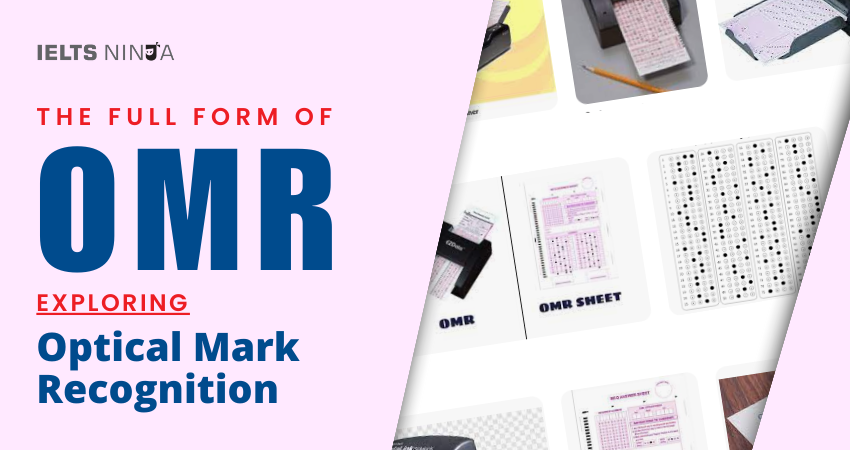The full form of OMR के लिए खड़ा है “Optical Mark Recognition”, जो है a technology used to capture human-marked data from documents such as surveys, exams, questionnaires, and ballots. It involves the use of specialized equipment to detect marks made by respondents using pencils or ink. OMR technology is known for its accuracy and efficiency in processing large volumes of data quickly. In this guide, we will explore the details of OMR, its applications, and how it works. The following are the key details of OMR:
How OMR Works:
- Forms Design: OMR forms are designed with specific areas where respondents can mark their answers or choices. These areas typically consist of circles or rectangles that can be filled in or shaded.
- Marking: Respondents use a pencil or ink to mark their choices on the OMR form. The marks should be sufficiently dark and clear to ensure accurate recognition.
- Scanning: OMR forms are scanned using OMR scanning machines or devices equipped with optical sensors. These sensors detect the presence or absence of marks in the designated areas.
- Data Capture: The scanning process converts the marked data into digital information. Each mark is interpreted as a binary response (e.g., 1 for marked, 0 for unmarked).
- Data Processing: The digital data is processed using software that interprets the binary responses and converts them into usable data for analysis or storage.
Applications of OMR:
- शिक्षा: OMR technology is commonly used in educational institutions for grading multiple-choice exams and surveys. It speeds up the grading process and reduces errors.
- Surveys and Market Research: OMR is used to collect and analyze survey data, including customer feedback, opinion polls, and market research surveys.
- Elections: OMR technology is employed in some regions for election ballots, where voters mark their choices on a paper ballot that is then scanned and tabulated.
- Healthcare: OMR forms can be used in the healthcare sector for patient feedback, medical surveys, and insurance claim forms.
- Data Collection: OMR is used in various industries to gather data quickly and accurately. For example, it can be used to collect information on attendance, inventory, and product feedback.
- Quality Control: OMR can be applied in quality control processes, such as checking product defects by marking defective areas on a form.
यह भी पढ़ें: सर्वश्रेष्ठ ऑनलाइन आईईएलटीएस कोचिंग एवं प्रशिक्षण अकादमी
Advantages of OMR:
- रफ़्तार: OMR technology allows for the rapid processing of large volumes of data, making it ideal for high-stakes exams, surveys, and elections.
- शुद्धता: When used correctly, OMR systems are highly accurate in recognizing and interpreting marks.
- प्रभावी लागत: OMR technology is cost-effective for organizations that need to process a large number of paper-based forms.
Limitations of OMR:
OMR technology is most suitable for multiple-choice questions or simple mark-based data. It cannot capture handwritten text or complex data.
निष्कर्ष:
Optical Mark Recognition (OMR) is a valuable technology for efficiently and accurately capturing data from paper-based forms. It finds applications in education, surveys, elections, and various industries where large-scale data collection and processing are required. OMR technology’s speed and accuracy make it a valuable tool for organizations seeking to streamline data capture processes.








